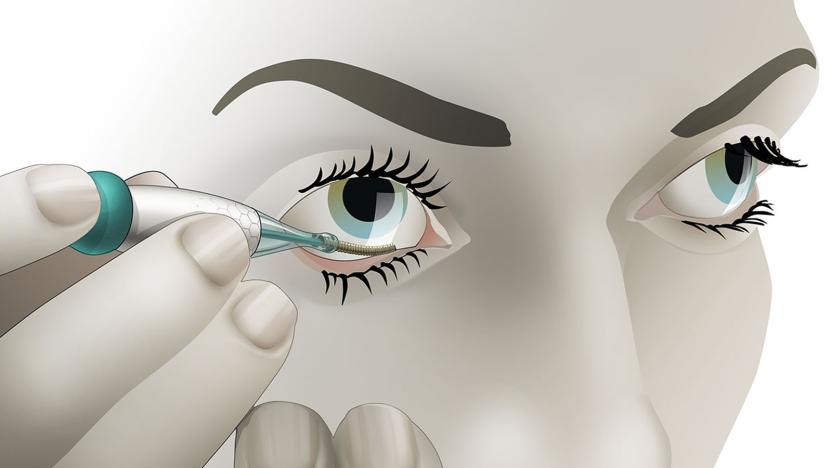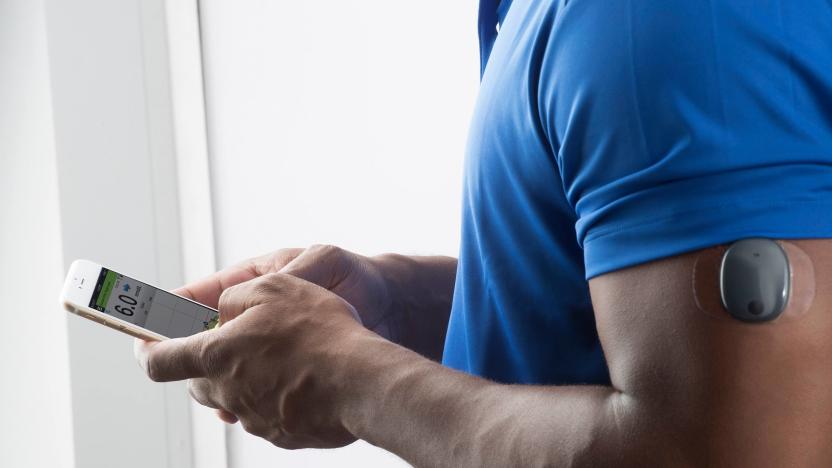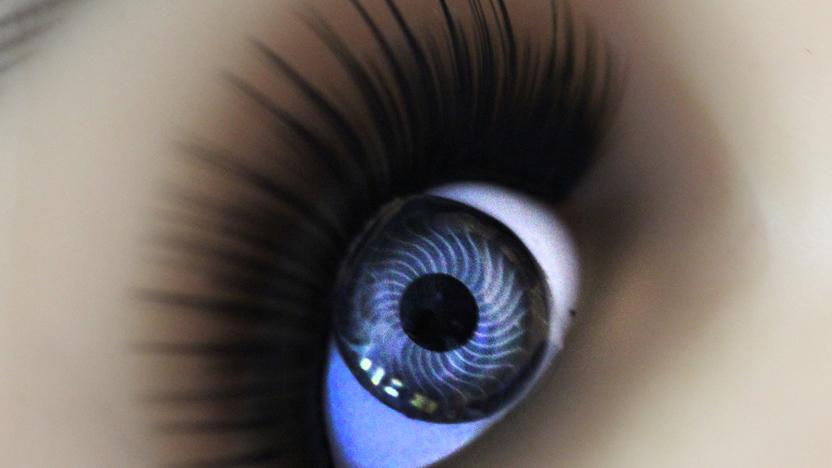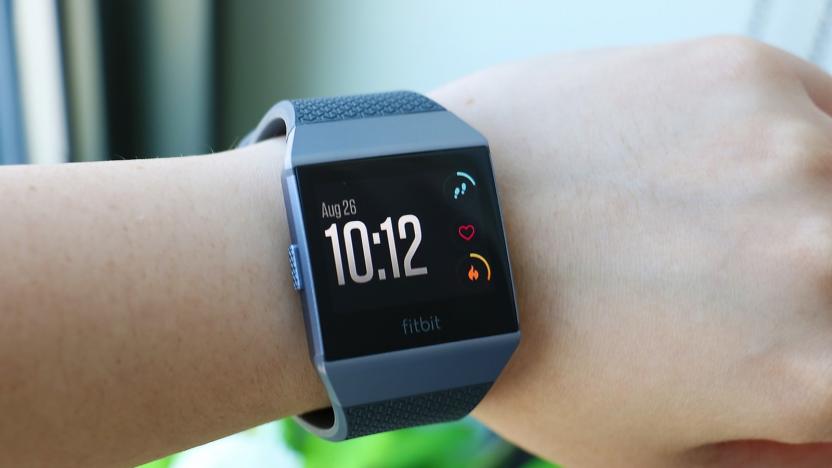GlucoseMonitor
Latest

Researchers develop a painless glucose monitor for diabetics
For those with diabetes, monitoring blood glucose is an essential part of disease management, but unfortunately, the methods for tracking glucose each have their own downsides. Finger-pricking can be a hassle and quite painful, while continuous glucose monitoring systems (CGMS) are often expensive, invasive and less reliable. But researchers at the KTH Royal Institute of Technology in Sweden have developed a microneedle-based CGMS that's more accurate, faster and cost-effective than what's currently available and is also pain-free.

Eyelid glucose sensor might pick up where Verily left off
Just because Alphabet's Verily shelved its glucose-monitoring contact lens doesn't mean you're stuck without an unintrusive way to manage diabetes. IEEE Spectrum has discovered a recent study that shows promise for Dutch startup Noviosense's own wearable glucose monitor, which measures tears by sitting in your lower eyelid. The spring-like coil was accurate enough that 95 percent of its data was either as good as blood or close enough to be acceptable. For contrast, previous studies suggested that tears might only have a 70 percent correlation at best.

FDA approves implantable glucose monitor that lasts for 90 days
A year ago, the FDA implemented new, streamlined regulations for digital devices. One of them is a continuous glucose-monitoring (CGM) system the FDA just approved that sends data from an implantable sensor to a paired mobile app, letting patients see their levels on their smart device. Once it's inserted by a medical professional, it can stay in the body for up to 90 days, which is far longer than comparable external sensors that typically must be swapped out around the ten-day mark. It's the first implantable CGM approved by the agency.

Glucose-tracking smart contact lens is comfortable enough to wear
The concept of a smart contact lens has been around for a while. To date, though, they haven't been all that comfortable: they tend to have electronics built into hard substrates that make for a lens which can distort your vision, break down and otherwise cause discomfort. A team of Korean scientists might just come to the rescue. They've developed a smart lens that could help diabetics track blood glucose levels while remaining stretchable enough to be comfortable and transparent enough to preserve vision.

Fitbit could add glucose monitors to future health-monitoring devices
Fitbit just invested over $6 million in a company called Sano that's working on a coin-sized patch that monitors blood sugar, CNBC reports. The wearables-maker already incorporates other glucose-tracking devices' data into its Ionic smartwatch, but this investment suggests that the company might be looking to more directly incorporate a monitor into its devices. "This fits into our strategy of looking beyond the device and thinking more about (health) solutions," Fitbit CEO James Park told CNBC. "I think the complete solution comes in the form of having some monitoring solution that is coupled with a display, and a wearable that can give you the interventions at the right moment."

Fitbit’s Ionic smartwatch will help diabetics track glucose levels
Fitbit is pairing up with Dexcom, a company that creates continuous glucose monitoring (CGM) devices for people with diabetes. In an announcement today, the companies say that their first initiative is to bring Dexcom's monitoring device data to Fitbit's new Ionic smartwatch.

Engadget Podcast Ep 21: Ooh Las Vegas
Associate editor Billy Steele, senior editor Nicole Lee and deputy managing editor James Trew join host Terrence O'Brien to talk about the early trends emerging from CES. It's only the first day of the show, but there's already been plenty of announcements, press conferences and lots of lost sleep. One of the most immediate things you'll notice on the show floor is that everything has voice control this year, even garbage cans. And tons of companies are rushing to integrate Alexa into cars, washing machines and refrigerators. The panel will also talk about the best and worst things they've seen so far.

Adhesive 'patch' monitors blood glucose without needles
Researchers from Cardiff University's School of Engineering have developed a glucose monitor that doesn't require you to prick your finger. It doesn't even need blood after the initial calibration, because it uses microwave to keep track of your glucose levels. The device then sends the data it gathers to an accompanying app. Professor Adrian Porch, one of its creators, told the BBC that its microwave levels are very low and nowhere near what's used for cooking. "Think about a mobile phone," he said, "we're about a thousand times less than that level."

Amazon Dash is ready to refill your printer or washing machine
Amazon has been hyping up devices with built-in Dash refill ordering, and the first wave of those devices is finally here. As of today, you can use the Dash Replenishment Service to top up the ink or toner on compatible Brother printers. If you're willing to wait until the end of January, the option will also be available for both a General Electric washing machine and a Gmate blood glucose monitor. Whichever device you get, the only real requirement is that you turn on the service -- Amazon will automatically order resupplies whenever your device is running low.

Piezoelectric system turns your balmy breath into pungent power
Researchers at the University of Wisconsin-Madison have come up with a way to produce electricity from just about the most renewable source known to man -- his own breath. It's all thanks to a plastic microbelt developed by engineers Xudong Wang, Chengliang Sun and Jian Shi. Made of a material known as polyvinylidene fluoride (PVDF), this belt produces an electric charge whenever low-speed airflow passes over it and causes it to vibrate -- a result of that vaunted piezoelectric effect. Eventually, Wang and his team were able to tinker with their system to the point where it could produce enough current to charge small electronic devices. "The airflow of normal human respiration is typically below about two meters per second," Wang explained. "We calculated that if we could make this material thin enough, small vibrations could produce a microwatt of electrical energy that could be useful for sensors or other devices implanted in the face." The researchers say their technology could be used to power smaller biomedical devices like blood monitors and pacemaker batteries, which typically don't demand vast amounts of energy. No word yet on when this system could make its way to the mainstream, but we'll be waiting with bated breath.





